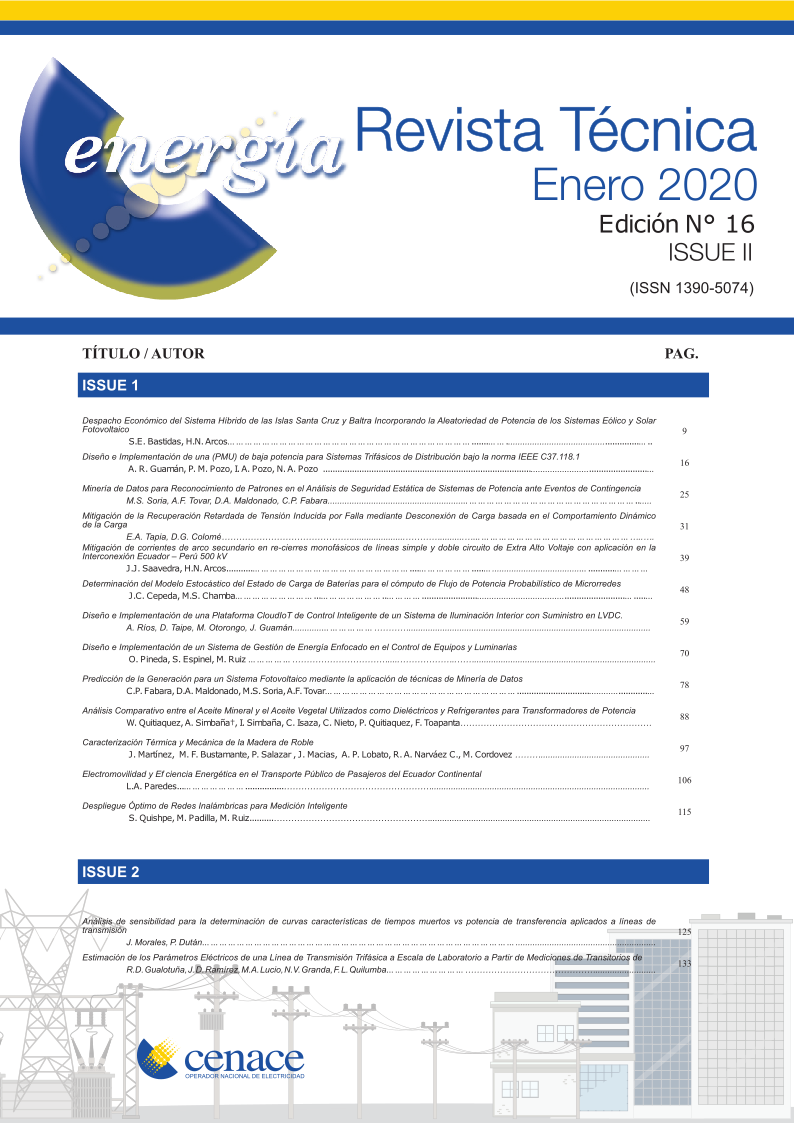Voltage Stability Improvement with a DSTATCOM in a Microgrid Integrated by DG Solar Photovoltaic and Conventional
Main Article Content
Abstract
At present, the positioning of the Distributed Generation (DG) and Electric Microgrids (MGs) systems has taken on large shares around the world. Therefore, the research needs related to the control, operation, stability, and resilience of these systems have marked a new paradigm of electric power supply systems. This article aims to improve the voltage stability by including a DSTATCOM device of FACTS technology in an MG integrated by DG of type Solar Photovoltaic and Conventional. The methodology developed is applied in the MG test system of the CIGRÉ, with the premise of analysis two operative mechanisms concerning the occurrence of a contingency, with which the MG will operate in isolation. The analysis is carried out through dynamic simulations in the time domain, where the dynamic behavior of the voltage is analyzed and evaluated, after the grid-MG systems have been subjected to disturbances, triggering the operation on the electric island of the MG. The results shown by the models and control algorithms developed operate satisfactorily, in addition, the applicability and benefits in the installation of DSTATCOM devices in MG systems are demonstrated to improve the operating conditions especially in terms of voltage stability.
Downloads
Article Details
Aviso de Derechos de Autor
La Revista Técnica "energía" está bajo licencia internacional Creative Commons Reconocimiento-NoComercial 4.0.




